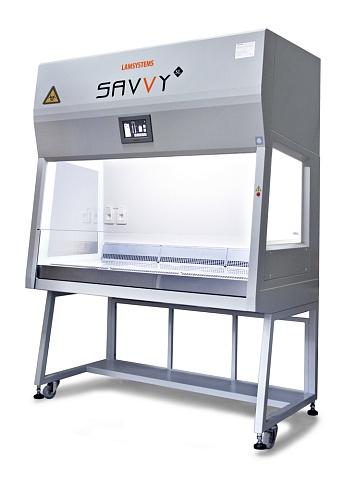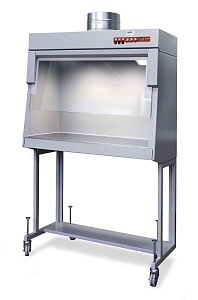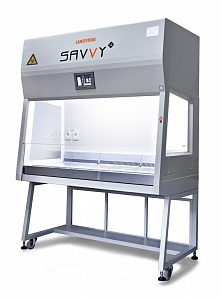What Is the Difference between a Fume Hood and a Biosafety Cabinet?

What Is the Difference between a Fume Hood and a Biosafety Cabinet?
Fume hood and biosafety cabinet are two kinds of lab apparatus that enable to clean up the workspace air and clear it of noxious components enabling lab personnel to work on high-risk substances without fear of contamination. Both of them are widely introduced in the medical, education, and healthcare industries. Fume hoods and biosafety cabinets protect lab employees from harmful vapors, still their intention, function, and operation differ significantly. This article compares these two types of equipment according to different criteria: protection, airflow, suitable applications, and variations they have. This guide can help you to decide which option suits you best.
Protection
First of all, you should determine what exactly you must secure as you do laboratory experiments or meddle with chemical substances. It may be personnel, product (or material) you're dealing with, and environment:
- Personnel protection occurs with the test site assistant as they operate an experiment that is safe from hazardous vapors that is a culmination of an ongoing scientific procedure.
- Product protection takes place when scientific experiments are nonaffected by poisonous toxins.
- Environmental protection means the whole site is cleansed, void of pathogenic subjects.
Fume hoods protect just site workers, whereas the biosafety cabinets are aimed at personnel, product, plus environmental safety (determined by their category). The choice of a befitting set of apparatus is centered on the purpose it will be essential for, including those products you must study. That’s why you should discuss with your safety officer to get suggestions dependent on what you need.
Airflow
Air purification's principle surrounding the site staff also distinct in biosafety cabinets and fume hoods.
Fume Hoods Exhaust the Air
There are exhauster fans above fume hoods. They help draw away chemicals then merge them with the external air amid the fume hood’s ductwork. They're then freed to the airspace. Enough volume of air must be accessible in the space to extract perilous moisture from the vicinity.
Biosafety Cabinets Filter the Air
All biosafety cabinets adopt High-Efficiency Particulate Air (HEPA) filters to unsullied air going to the site and outwardly to its surroundings. But the way they operate relies on their kind:
| Class of biosafety cabinet | Airflow | Type of protection |
| Class I | In this type of biosafety cabinets, air is spread all over the site, separated from the staff. | Personnel and environmental protection |
| Class II | After pulling air enclosing the handler, the decontaminated air goes to the surface of the station. The extracted air is permeated over HEPA. Then it's reintroduced to the site or the atmosphere. | Product, personnel, and environmental protection |
| Class III (“glove boxes” biosafety cabinet) | With a gas-tight barrier, the intake and exhaust air go over to the HEPA filtration inside the biosafety cabinets. | Personnel and environmental protection |
Applications
While deciding whether to pick fume hoods or biosafety cabinets, one should also determine what kind of material/products your laboratory staff will work on. Various materials have different chemical properties: personnel must attend to virulent, volatile, and odorous components. Fume hoods and biosafety cabinets propose safeguarding of risks with regards to different elements.
Toxic and Volatile materials
Suppose your job is connected to risky tools, along with dangerous chemicals, such as baneful gases, delicate materials, chemicals that can mottle, flammables, or other poisonous and volatile compounds. So, you have to equip your site with a fume hood. At the same time, fume hoods aren't compatible with hazardous and potentially unsafe pathogenic agents and microorganisms.
Infectious Microorganisms
This category needs another level of preventive measures. While dealing with such substance, personnel, environment, even product should be secured. Biosafety cabinets are tools managed for safe handling of mild, even high-risk components. This includes human pathogens or antineoplastics. They are likely to create aerosols (such as vortexing open tubes, pipetting, opening caps after centrifuging, sonicating, aspirating with a syringe, etc.). Biosafety cabinets also help manipulate airborne transmitted pathogens (namely Brucella abortus, Mycobacterium tuberculosis, etc.).
Variations of Fume Hoods
- Ductless Fume Hoods
- Utilizes carbon filters to eliminate fumes and vapors
- Eco-friendly that employs an advanced technology called carbon filtration
- Clean air is returned over cleansing of unsafe fumes
- Cost-efficient and energy saving
2. Walk-In Fume Ho
- Houses big items plus gears in sifting the fumes and odors
- Allows the workers to move within a vast space
3. Chemical Fume Hoods
- For the treatment of dangerous compounds
- Crafted to avoid harm towards the handlers in grappling with chemicals
4. Perchloric Acid Fume Hoods
- Created specifically for working with perchloric acid
- Helps avoid the formation of perchlorate salt
5. ADA Fume Hoods
- For a definite safe workplace, this fume hood is fully ADA-compliant
- An option for it to be operated by hand exists
6. Canopy Fume Hoods
- Extracting heat, steam, plus other odors, this ventilation system caters to non-lethal materials
- Often fixed in ceilings or walls
- Customizable
7. Radioisotope Fume Hoods
- Made for sites dealing with radioactive materials
- Prevents corrosion and contagions while still ventilating harmful fumes and odors
8. Polypropylene Fume Hoods
- For those who deal with acid-rich materials and chemicals
- Does not allow liquid or air to pass through it (nonporous)
9. Variable Air Fume Hoods
- By maintaining constant velocity, the cost from the air exhausted from the unit is reduced
- Utilized with other exhaust systems
10. Extractor Arm Fume Hoods
- An exhaust ventilation device to aerate local air streams, odors, and fumes
- It may be attached to a ceiling, wall, or bench
11. Low Air Flow Fume Hoods
- Requires less space because they function at a lower rate
- Energy savings of up to 40%
Variations of Biosafety Cabinets
Biosafety cabinets are for individuals to move in an enclosed, ventilated space to avert impurity and secure workforce's welfare.
1. Class I Biosafety Cabinet
- Most basic
- Provides personnel and environmental protection
- Fit for Risk Group 1 and RG2 biological material
- A ventilated cabinet
- With personnel, environmental, and product protection
- Common in clinical and research labs involved with infectious agents in RG1, RG2, and RG3
3. Class III Biosafety Cabinet
- Has the highest level of personnel protection
- Made from RG3 and RG4 agents
Here, in this comparison table you can determine how these two types of laboratory equipment differ according to the criteria:
| Criteria | Fume hoods | Biosafety cabinets |
| Materials | Dangerous chemicals | Infectious biological agents |
| Protection | User only | User, environment, product (material) |
| Filtration | No HEPA filter | Must have HEPA filter |
| Airflow | Exhaust air outside the laboratory | The air is being filtered, trapping the infectious agents, and then recirculates |

